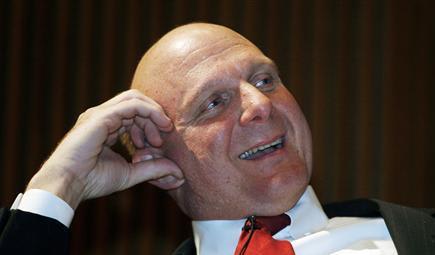A friend of mine is starting a developer relations department inside their startup and asked for my advice in fostering a community to grow awareness and sustainability. While I wrote this for their company, I have a feeling this could spark ideas for others, so I'm lightly obfuscating it and publishing it here. In case you're not interested in DevRel, I'm also including a bunch of pictures of Steve Ballmer. Enjoy
First, let's narrow down the business goals we will drive.
DevRel can help with these high-level business goals:
- Drive adoption of the product as a useful tool
- Raise awareness of the company as a thought leader for the developer personas you are targeting
- Decrease time-to-deployment/time-to-revenue
Next, we can formulate our ideals. These will guide us as we create our community and interact with it.
We will interact with our community adhering to these ideals:
Authenticity - Show our whole selves as advocates for the developer.
Advocacy - Become a touchpoint for their interests and goals.
Community - Identify with the kinship of goals of our customer base.
Gratitude - Be thankful to the community for feedback and insights.
Measurement - Justify our assumption with numbers when we can.
We drive goals and adhere to ideals with...
Strategies
- Build authentic relationships.
- Help, mentor & inspire developers.
- Collect feedback and surface internally.
- Automate these strategies with tools.
- Empower the community to achieve our goals.
Tactics to achieve these strategies:
- Blog Posts
- On Our Blog
- Partner Blogs
- External Syndication
- Webinars
- Interviews
- Panel discussions
- Twitch coding sessions
- Virtual Conferences
- Third-party
- Run your own
- Virtual Meetups
- Email Newsletter
- Whitepaper / Technology-adjacent Book
- Relevant Website CTAs
- Community
- Developer feedback
- Developers help developers
And measure this with (these are kinda straight to the point but that's how I like it)
Metrics:
- Unique views per artifact
- New users per artifact
- Paid users per artifact
- MRR per artifact
- Total revenue per artifact
This is a lot to unpack. How do you focus? Make a timeline. Here's an example for your first month and first quarter:
First Month:
- Craft content calendar and webinar schedule
- Identify external contributors and internal collaborators
- Establish metrics
- Identify call-out potential through existing content
- Identify strategies to amplify content
- Clarify long-term content goals
- Identify customers for interviews
First Quarter:
- Measure & iterate on first month goals
- Use content data to begin hosting webinars
- Schedule 2nd quarter content to build a series to thread into an e-book
- Choose platforms to build out peer-to-peer community engagement
- Identify external syndication sources & development partners
- Start customer interview series
- Plan 3rd quarter virtual conference
Hopefully these will give you some ideas for your first developer relations hire.
Before we go...
There are a few non-traditional points I'd like to make in closing:
Don't let your first developer relations hire do things entirely as they've done them before. Every product and company is different, and you don't want to tie yourself down to strategies, best practices and tactics that may not work for your own company. You know more about your product and customers at the outset.
Start measuring. It's never too early, but it's tempting to focus on completing deadlines instead of building a successful long-term program.
Focus on your Ideals. Building a supportive and sustaining community built on gratitude will do a lot for your long-term program. If you build a program directly on metrics and content, that's marketing, not DevRel.
Next Steps:
- Check out Sarah-Jane Morris's interview DevRel Engineer One: Building a Developer Relations Team from The Ground Up
- Get a retrospective from someone who started a DevRel team in Seven Years Scaling a Data-Driven DevRel Team with Brian Munz












Top comments (0)